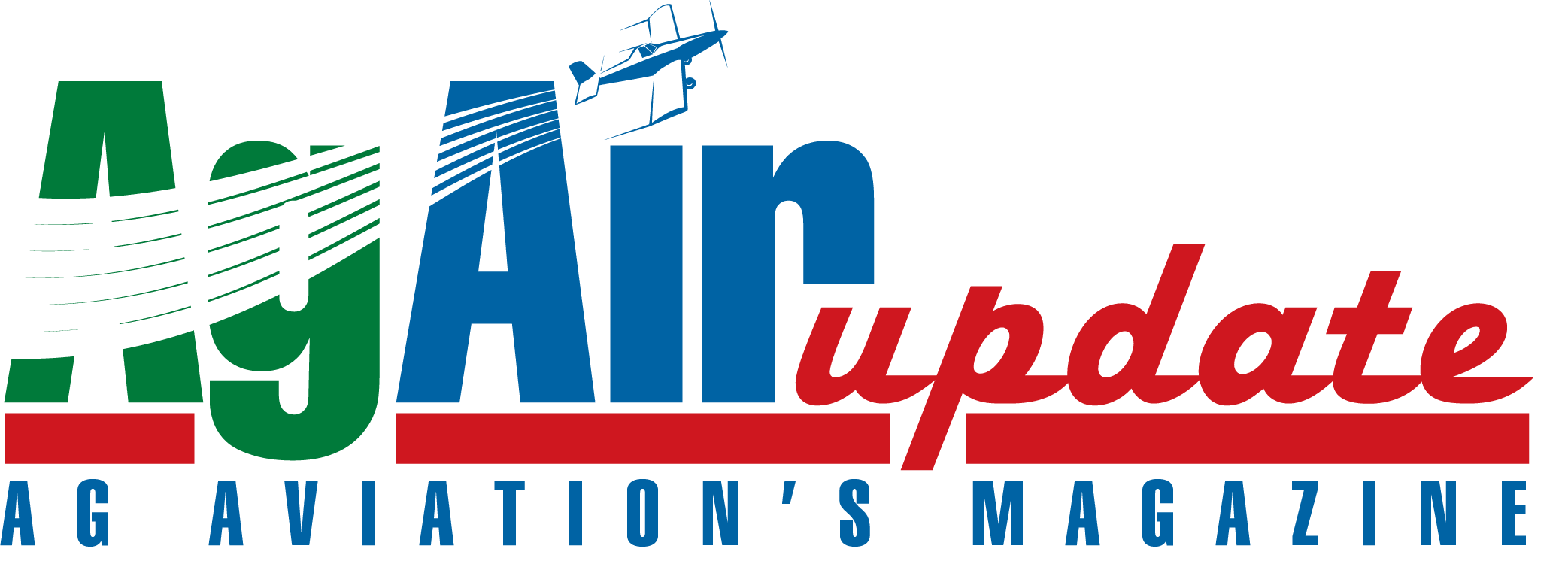The state of São Paulo is known for its vast fields of sugar cane. From the air, it looks like an “ocean” of green during the growing season. There are several successful ag-operations in the region. One of these is Imagem Aviação Agrícola with its primary operations base located at São José do Rio Preto. To service its clients, Imagem has a fleet of seven Air Tractors and six Ipanemas including a new EMB-203 Ipanema that was delivered December 23, 2020. The Ipanemas were bought directly from Embraer, while the first Air Tractor was bought from Aeroglobo and the remaining six Air Tractors were bought from DP Aviação. The Ipanemas are used for smaller fields. Some growers prefer it over the larger, turbine powered aircraft. The base cost of the new Ipanema was over $2,000,000 reais.
Jorge Humberto Morato de Toledo and Rodrigo Fernandes are co-owners of Imagem since the formation of the company in 2000 in São José do Rio Preto with one Ipanema 201A. Rodrigo graduated from CAVAG in Cachoeira do Sul, RS in 1997 and is the chief pilot for the company. Jorge handles the administrative duties of the company and its agronomist, as well as serving as the vice president of SINDAG since 2019.
Toledo says, “It is very challenging to serve as an officer for SINDAG. Rodrigo and I are the only ones to manage Imagem as its co-owners. I am not only an owner, but also the agronomist for the company; so I stay busy.” At one point, the company operated seven Ipanemas 202As. In 2010, Imagem bought its first Air Tractor, an AT-502B. Today, the seven-Air Tractor fleet has five AT-502Bs, one AT-402B and one AT-802 with a PT6A-67AG engine. The Ipanema fleet has five EMB-202As and one EMB-203 for a total of 13 ag-aircraft.
Jorge comments, “During the years of Imagem’s expansion from seven Ipanemas to its current fleet that includes the transition to the Air Tractor, Diego Preussof DP Aviação has been like my right-hand person, helping us with this big change.”
Imagem is a large company with an infrastructure to match. The company has a fleet of 15 service trucks; one for each aircraft with an additional two service trucks available for either an Air Tractor or Ipanema, as the need arises. Each Air Tractor has an assigned service truck that provides 5,000 liters of Jet A fuel and a 1,000-liter tank for mixing chemicals. The 2018 AT-802 has its own service truck with a 1,000-liter mix tank and an 8,000-liter Jet A fuel tank. The Ipanemas’ service trucks have 500 to 600-liter mix tanks with 2,000-liter alcohol fuel tanks. All the Ipanemas are alcohol powered.
The main base of operation is located today at São José do Rio Preto. However, Imagem is moving from this location to about 10 kilometers away due to urban sprawl. A second operations base with the company’s head administration offices is in Monções, which is about 100 kilometers to the west of São José do Rio Preto. This base was formed in 2002. At the Monções base, new operational facilities are being built with a projected completion date of late 2021 or early 2022. A third operational base is in Uberaba, MG, approximately 230 kilometers to the west of São José do Rio Preto.
At the São José do Rio Preto base, there is a large catch basin of 200,000 liters for catching rainwater. This water is used to wash equipment. Also, there are Jet A fuel storage tanks with a capacity of 90,000 liters at both São José do Rio Preto and Monções. For fueling the Ipanemas, there is 30,000-liter alcohol capacity at both São José do Rio Preto and Monções bases. The Uberaba base has a Jet A capacity of 30,000 liters and an alcohol capacity of 20,000 liters. Each base has 15,000-liter water capacity for mixing loads for the aircraft.
About 95% of Imagem’s flying is on sugarcane. These crops are delivered to different sugarcane mills in the São José do Rio Preto region. Approximately 50% of Imagem’s clients are from China who own four of the sugarcane mills that are managed by Brazilians.
Sugarcane is normally treated using CP nozzles applied at 30-45 liters/ha to control insects, fungi and apply NPK fertilizers, which are about 35% heavier than water (3.5 kg vs 5 kg).
The other 5% of crops treated are a diversity of soybeans and cotton in the Uberaba region and eucalyptus. For these crops, Imagem aircraft use Microspin and Microbell atomizers. Eucalyptus treatments for controlling insects are applied at 10 liters/ha. Soybean applications are treated at 20 liters/ha and cotton at one liter/ha. Additionally, the company conducts fire fighting missions in the state of São Paulo.
Imagem started firefighting operations in 2014 working for the state of São Paulo and continues to this day. In 2019, the sugar mills began hiring their services to fight cane fires. As much as 70% of these fires are started by disgruntled arsonists. In the past, the AT-502Bs were used for firefighting. However in 2021, the AT-802 outfitted with a Zanoni hydraulic fire gate will be used.
Currently, Imagem is on a type of “Call When Needed” contract at a fixed rate per hour. When called, an Imagem aircraft must be on the fire within two hours. Imagem’s outlook is for more aerial firefighting in 2021 and the coming years.
There has been a huge transition from the Ipanema to larger, turbine powered ag-aircraft like the Air Tractor and Thrush in Brazil. However, there’s also been a significant expansion of aerial applications during this time. Imagem Aviação Agrícola is proof that the Ipanema is still a vital component of Brazilian ag-aviation; having at one time a solitary fleet of seven Ipanemas to today’s fleet of 13 ag-aircraft of which six are Ipanemas for meeting particular clients’ demands.















